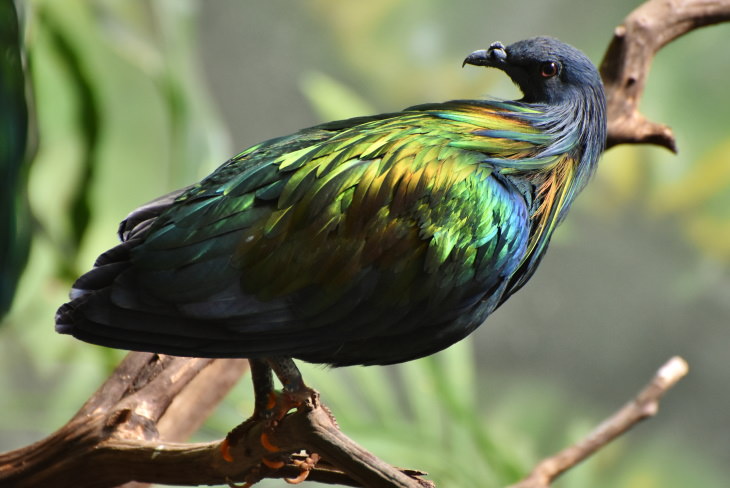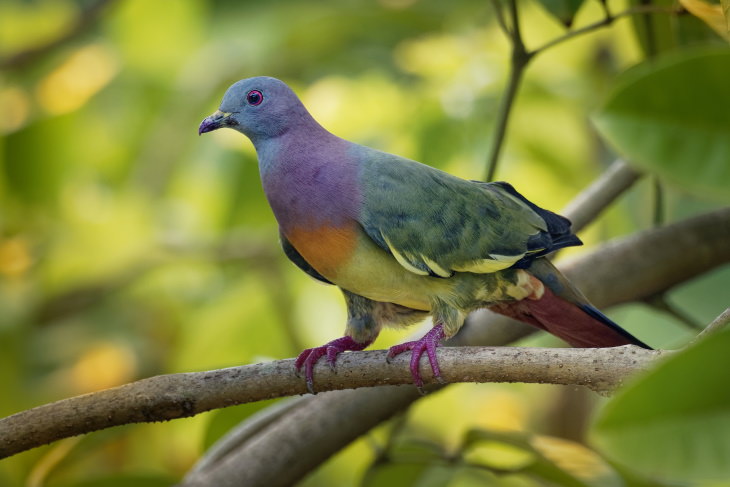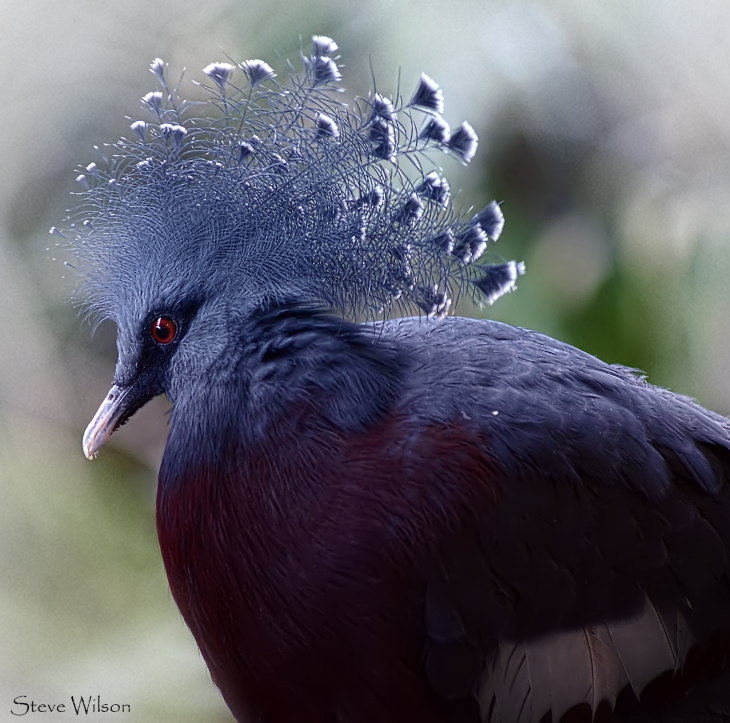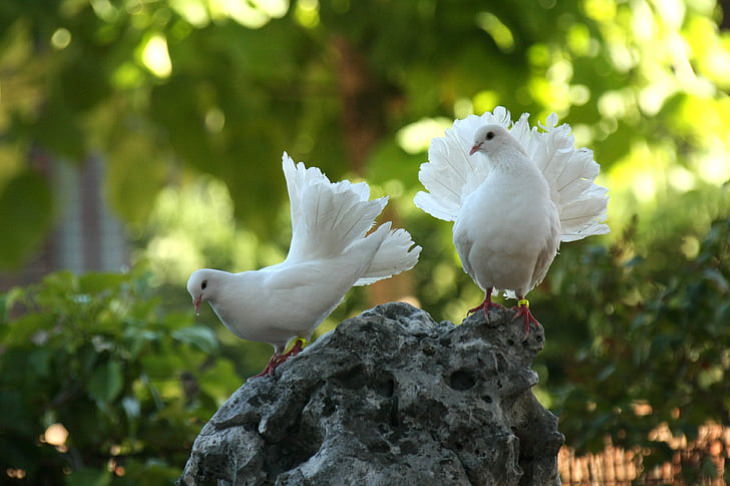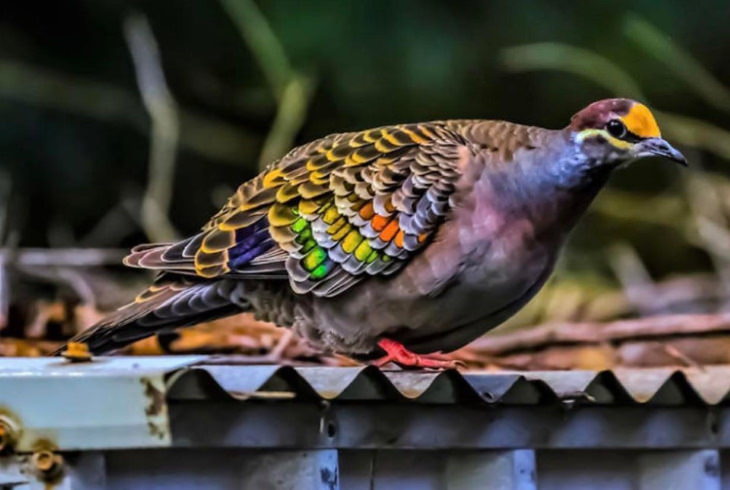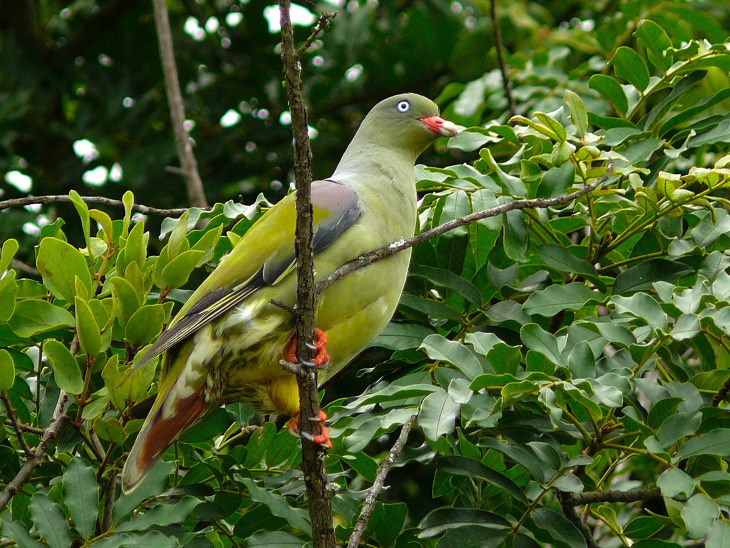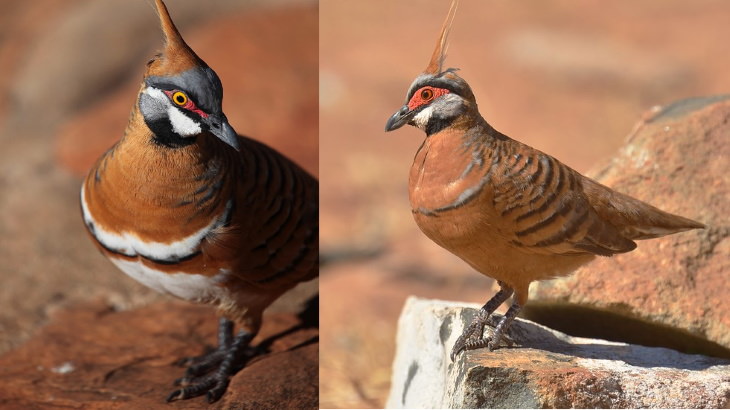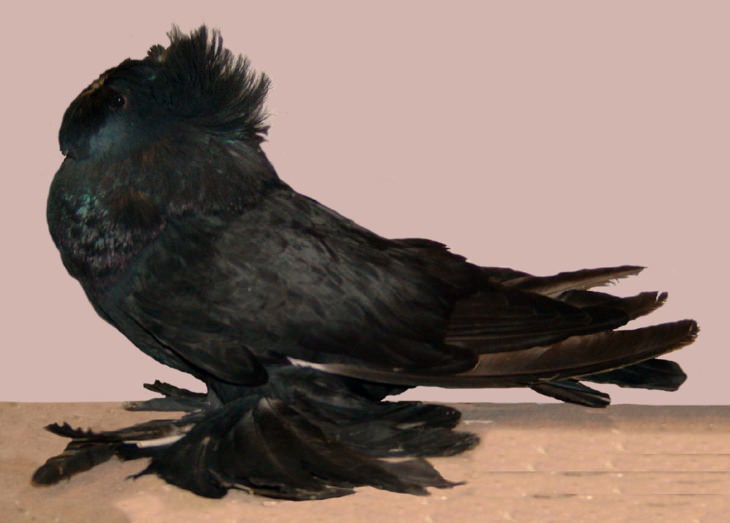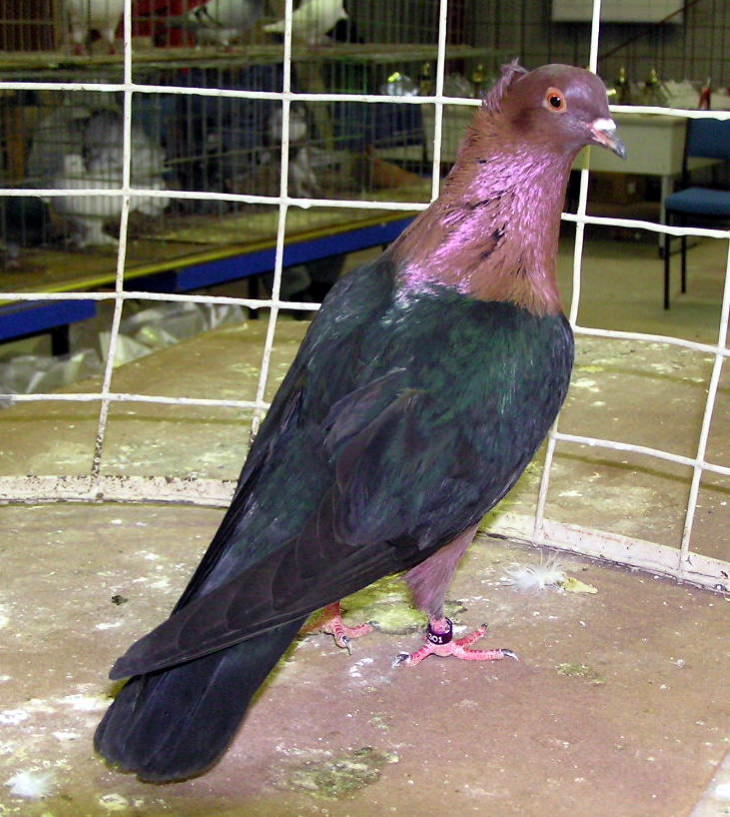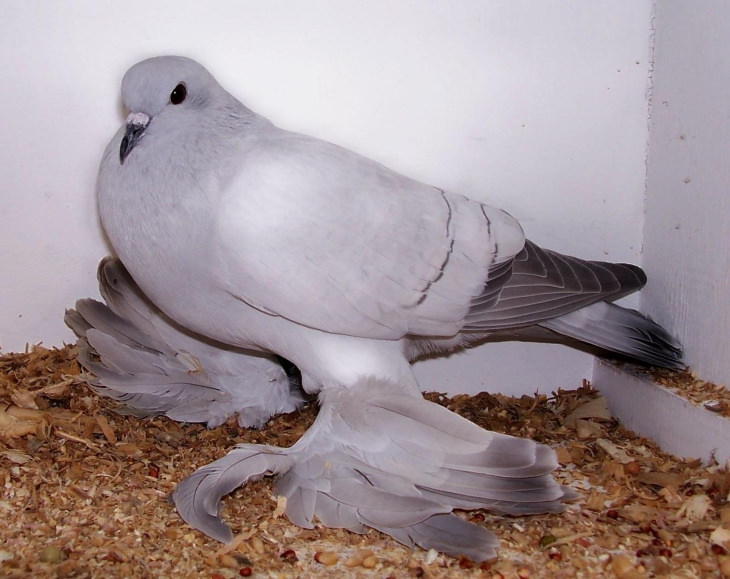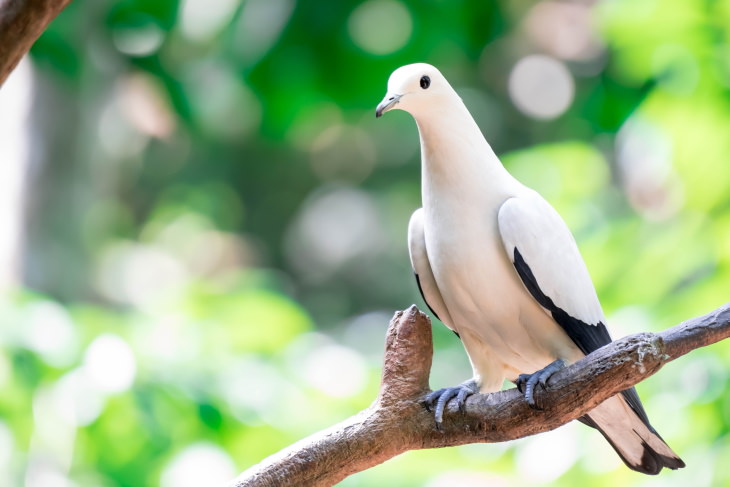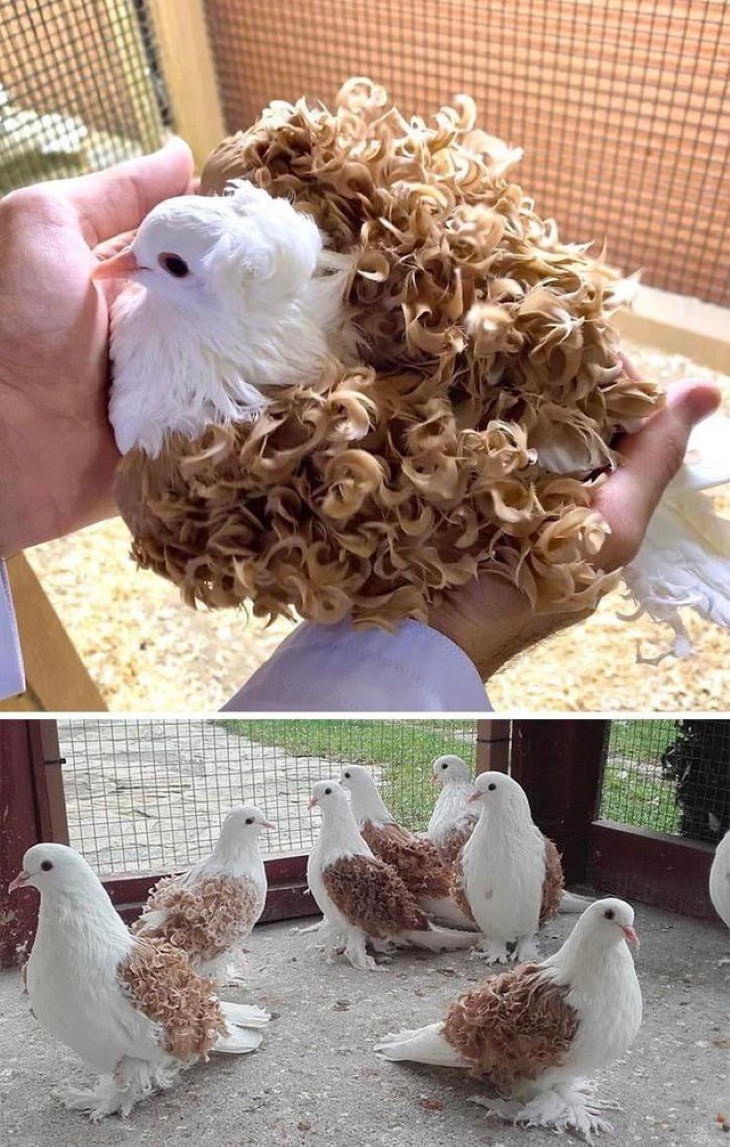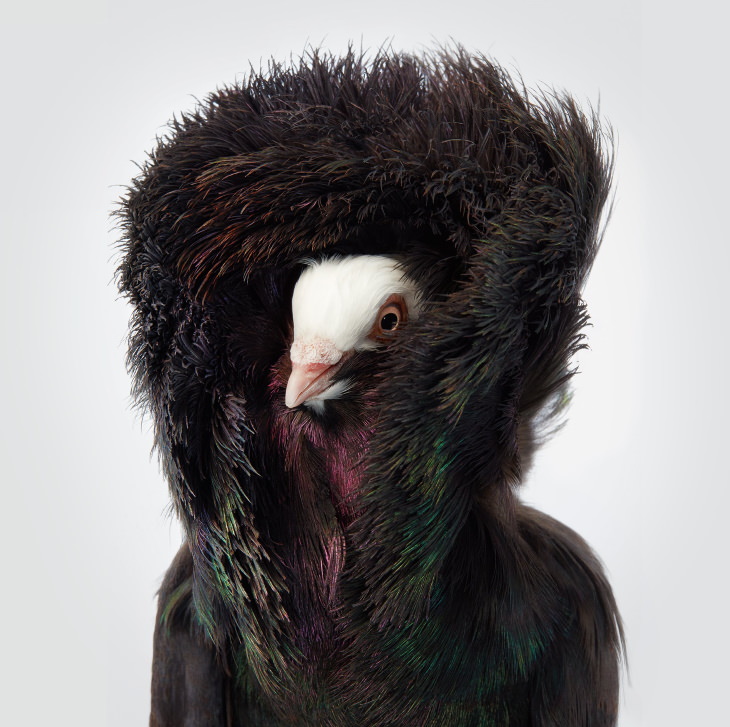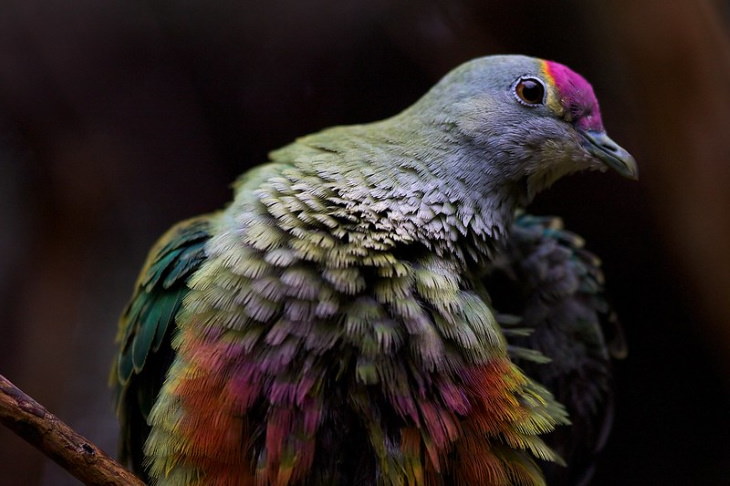1. Nicobar Pigeon (Caloenas nicobarica)
The metallic multi-chrome sheen of this bird's feathers and its long neck feathers are out-of-this-world beautiful! This rare pigeon species lives exclusively on the Andaman and Nicobar Islands in India and ornithologists believe that the Nicobar pigeon may be the closest living relative of the extinct dodo bird.
2. Pink-Necked Green Pigeon (Treron vernans)
This colorful little dove survives almost exclusively on fruit, particularly figs. The Pink-Necked Green Pigeon is common across Southeast Asia, found from Myanmar and Vietnam all the way to Indonesia and the Philippines. Above, you can see a male pigeon, whose plumage is significantly more vibrant than that of the mostly green-colored females - an example of sexual dimorphism in nature, where males and females of the same species look different.
3. Victoria Crowned Pigeon (Goura victoria)
If you had seen this magnificent bird at a zoo, you'd hardly associate it with a pigeon. Not only is it much larger, reaching the height of a medium turkey, it also has a spectacular feathery maroon crest on its head, reminiscent of a peafowl's feathers. This beautiful bird lives in the tropical rainforests in northern New Guinea and the surrounding islands.
4. Fantail Pigeons (Columba livia)
Fantail pigeons are a breed of domesticated pigeons - a direct descendant of the common pigeon you would ordinarily see on your windowsill. These fancy pigeons were bred to have a magnificent fan-shaped tail that has 30-40 feathers. Though the breed had been initially developed in India, Pakistan, China, or Japan, the first person to introduce the fabulous dove to the Western World was Charles Darwin. Today, fantail pigeons come in many sub-breeds and plumage color variations.
5. Bronzewing Pigeons (Phaps)
These Australian pigeons from the genus Phaps are commonly known as bronzewings, as some areas of their wings are covered by iridescent patches that shine with bronzy or other colorful hues when exposed to light. There are seven known bronzewing pigeon species, and all of them live in small to large flocks in different parts of the country.
6. African Green-Pigeon (Treron calvus)
The African green-pigeon, too, can be easily confused for a different bird, as it definitely resembles a parrot more than it does a pigeon. These pigeons are about the same size as a common rock pigeon and they live all across Sub-Saharan Africa. Interestingly, much like parrots, they climb trees to reach fruit - their main sustenance.
7. Spinifex Pigeon (Geophaps plumifera)
The Spinifex Pigeon, also known as the Gannaway pigeon, is an Australian species belonging to the bronzewing genus. It's most well recognized for the spike-shaped brown crest on its head and the red and black stripe around its eyes. These smallish birds are pretty spectacular, as they survive in semi-arid climates of northern and central Australia, foraging tirelessly for the seeds of drought-resistant plants and small insects.
8. Bokhara Trumpeter (Columba livia)
Another fancy pigeon breed is the Bokhara Trumpeter, a pigeon species characterized and recognized among breeders for their extremely long and fluffy muffs (the feathers on the feet) and a double crest. In fact, their crests are often so full they can obscure their eyes almost completely, which is why the birds are often associated with the Old English Sheepdog. There are many other, less bizarre-looking breeds of trumpeter pigeons, too. As you may have guessed, they are named after the unique sounds they produce, which some breeders say, resemble human laughter.
9. Archangel Pigeons (Columba livia)
Archangel pigeons, too, are a domestic breed, and like all fancy pigeons, also known as ornamental pigeons, they are descendants of the common rock pigeon. Archangel pigeons are among the oldest pigeon breeds, with the first records of their existence going all the way back to Dalmatia and Illyria - both antique historical regions in the Balkans. This gorgeous breed is distinguished for the vibrant metallic sheen of their feathers. Though Archangel pigeons come in several hues, the black and copper-colored birds like the one you see above are the most common.
10. Pouter Pigeons (Columba livia)
Pouter pigeons are a large group of different ornamental pigeons, all of which have one thing in common - an extremely large, inflatable crop that makes their chest area appear extremely large compared to their body. Pouter pigeons are a fairly recent breed, but they are widely cherished among breeders for their unique and unusual appearance.
11. Ice Pigeon (Columba livia)
Known for their one-of-a-kind color, ice pigeons, too, are domestic fancy pigeons. The breed was developed in south Germany and Poland. One of the most famous owners of an ice pigeon was Charles Darwin, who mentioned the beautiful bird in 1846 as an example of the possible color patterns that can be achieved through cross-breeding.
12. Pied Imperial Pigeon (Ducula bicolor)
This large bird from Southeast Asia is the Pied imperial pigeon, a group of species that inhabit different habitats from Myanmar and Thailand to Indonesia, the Philippines, and even some regions in New Guinea. The most prominent characteristic of this bird is its piebald coloring - a genetic feature where some areas of the animal's body are pigmented, whereas the rest are not, and so they are white.
13. Frillback Pigeons (Columba livia)
This domesticated pigeon breed is likewise very unique, as the top feathers on their wings are naturally curly. In some varieties, like the yellow frillback you can see above, even their muffs are frilled. Frillbacks come in different color variants and they are extremely popular among breeders. Their calm and docile demeanor also makes them a popular pet pigeon breed.
14. The Jacobin Pigeon (Columba livia)
Of all the domesticated pigeon breeds, the Jacobin Pigeon surely possesses a regal appearance. Though the breed was developed in Asia, the name of the magnificent bird comes from the resemblance of the soft feathers and hood around their heads to the garments of Jacobin monks. Needless to say, these aristocratic birds have been extremely popular among breeders throughout history, with both Charles Darwin and Queen Victoria owning a collection of these pigeons.
15. Rose-Crowned Fruit Dove (Ptilinopus regina)
The last but definitely not the least mention on our list belongs to the Rose-crowned fruit dove, also known as the pink-capped fruit dove. This rainbow-colored bird is native to Australia and Indonesia, where it's quite common. This species feeds on mainly fruit and other plants. Interestingly, Rose-crowned fruit doves are born completely green, and their vibrant plumage and characteristic pink cap are acquired as they grow up.

